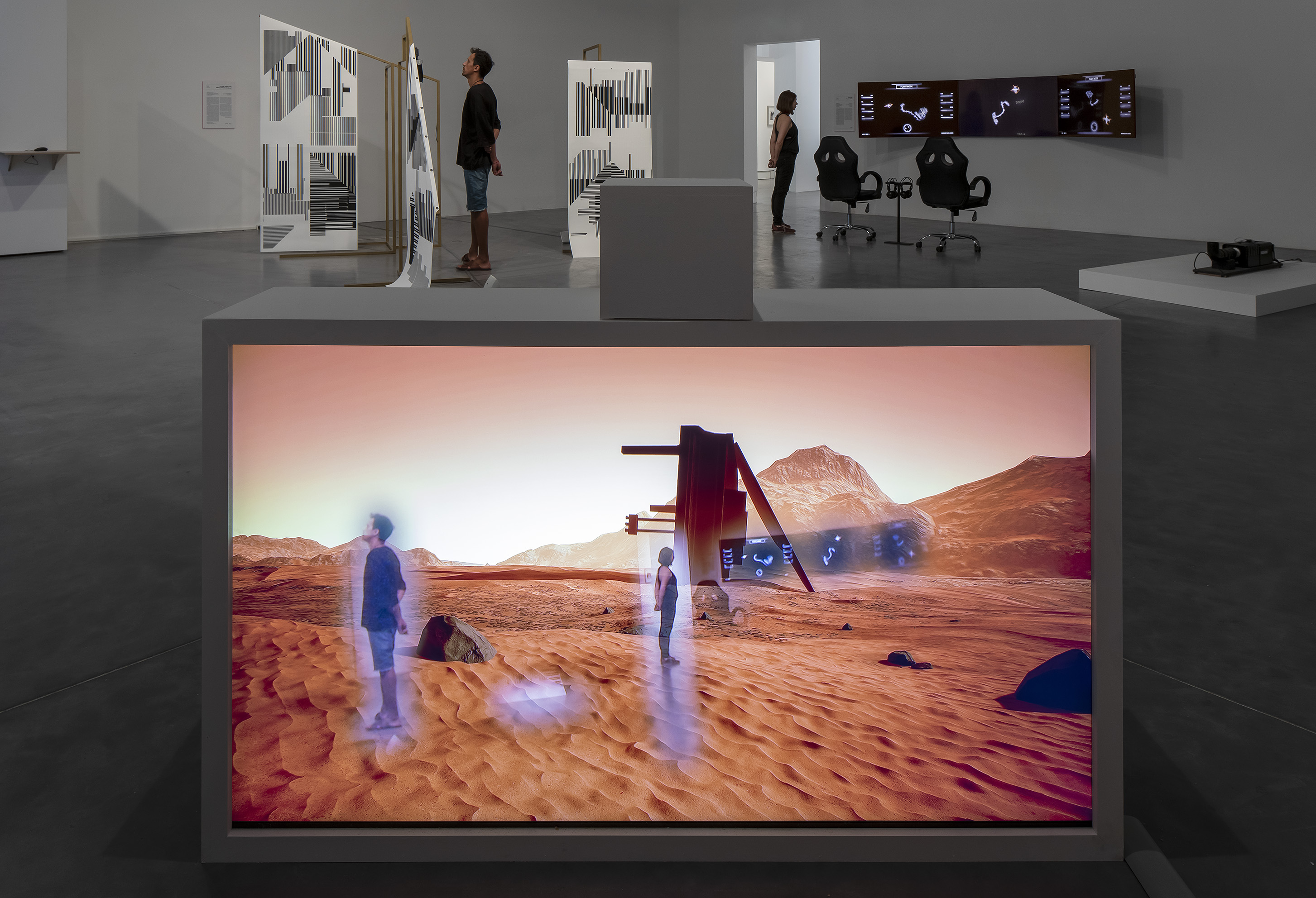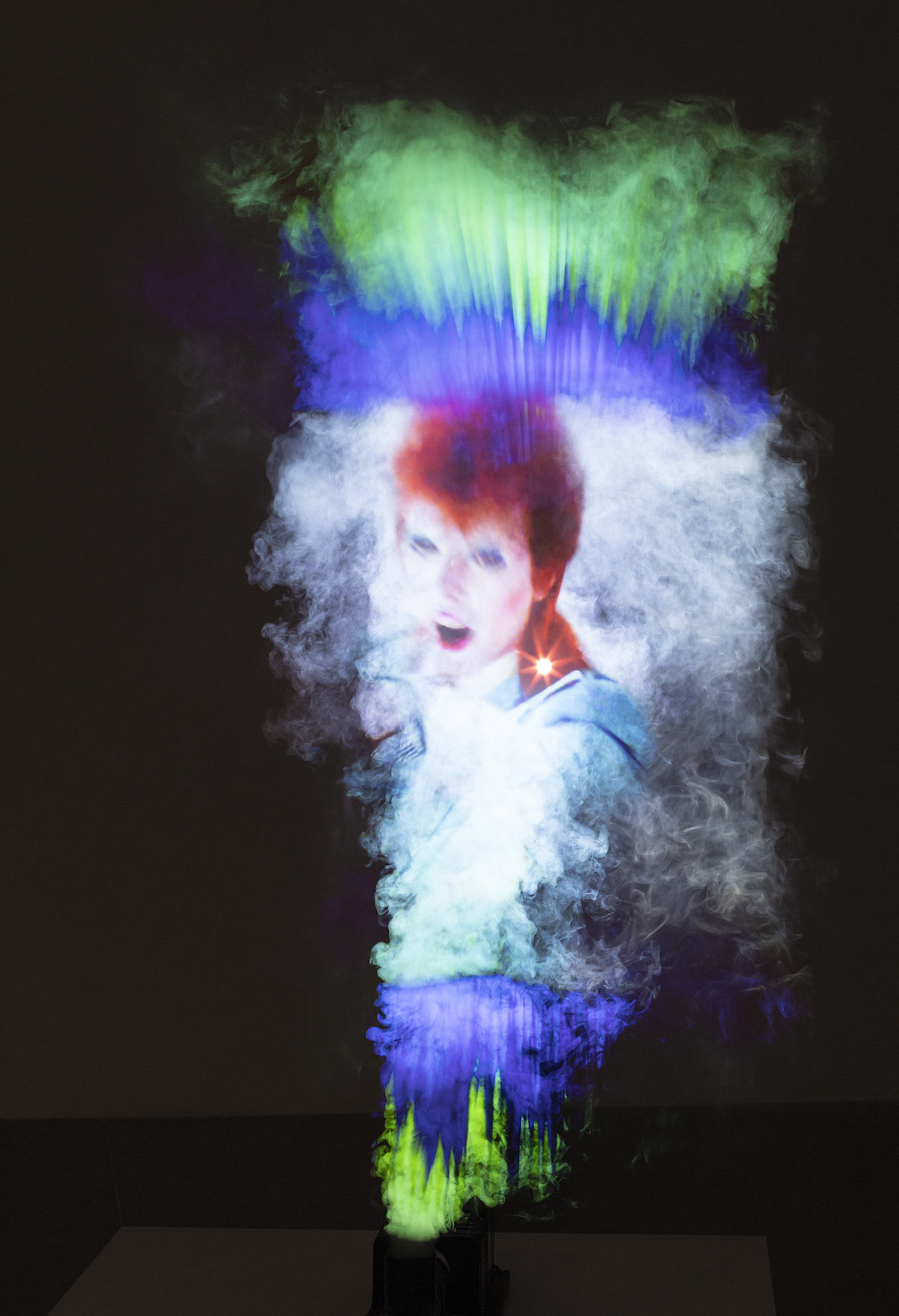After Life On Mars

Part II. Installation Shot, as Part of the exhibition “Deep Feelings- AI and Emotions” Curator: Nohar Ben-Asher, Petach Tikva Museum, 2019 Photo: Elad Sarig
After
Life on Mars, 2018-19,
Media Instllation,
Augmented reality made software, Custom Made Smoke machine, Projected image, sound
Software: developed together with Israel Levin and Nimrod Keret
Construction of smoke machine: with Yuval Kedem and Ronny Ziss
Animation: Monty Alon and Shachar Barnett
(*) Part I of this piece was created for Print Screen festival 2018, Fabrication, Curated by Lior Zalmanson, Udi Edelman, Shimrit Gil
Media Instllation,
Augmented reality made software, Custom Made Smoke machine, Projected image, sound
Software: developed together with Israel Levin and Nimrod Keret
Construction of smoke machine: with Yuval Kedem and Ronny Ziss
Animation: Monty Alon and Shachar Barnett
(*) Part I of this piece was created for Print Screen festival 2018, Fabrication, Curated by Lior Zalmanson, Udi Edelman, Shimrit Gil
Miri Segal's performative installation consists of two parts, exploring emotions while swinging between past and future: a video-clip projection on smoke and an augmented reality animation projection on a screen. The projection on smoke conjures up David Bowie's Life on Mars 1972 video clip, which addresses the yearning for life on Mars as a place of fantasy and new beginnings, an alternative for the disappointing life on Earth. The projection on screen, in contrast, refers to the development of artificial intelligence (AI) technology, which enables men to reach Mars by sending robots.
The work's two parts tie the two shifts in technological development in the 20th and 21st centuries: the space race and the study of AI. In both cases, man faces infinity: the infinite universe and infinite knowledge. The engagement with infinity enhances emotions, between the poles of technophobia and technophoria.
Excerpted image of planet Mars appear on screen alongside objects which seem to be falling from the sky into the actual museum space. The objects were extracted from a digital database at Princeton University, whose use is meant to develop a deep learning (AI) code, while practicing identification of hundreds of thousands of objects. This technology is intended to help us reach realms in outer space in the future which man is incapable of conquering with his biological body. At the same time, the jumble of generic images falling from the sky also conveys fatigue and disgust at this old order.
The two different projections—one analogue and the other digital—present vague images: the elusive smoke blurs the body's contours, while augmented reality is nothing but a two-dimensional plane on a screen in the gallery space. The entities and objects seen in it are at once abstract and present, attesting to the body's absence in the technological reality, then as well as now, in an era of smart technology.
Text: Nohar Ben-Asher
The work's two parts tie the two shifts in technological development in the 20th and 21st centuries: the space race and the study of AI. In both cases, man faces infinity: the infinite universe and infinite knowledge. The engagement with infinity enhances emotions, between the poles of technophobia and technophoria.
Excerpted image of planet Mars appear on screen alongside objects which seem to be falling from the sky into the actual museum space. The objects were extracted from a digital database at Princeton University, whose use is meant to develop a deep learning (AI) code, while practicing identification of hundreds of thousands of objects. This technology is intended to help us reach realms in outer space in the future which man is incapable of conquering with his biological body. At the same time, the jumble of generic images falling from the sky also conveys fatigue and disgust at this old order.
The two different projections—one analogue and the other digital—present vague images: the elusive smoke blurs the body's contours, while augmented reality is nothing but a two-dimensional plane on a screen in the gallery space. The entities and objects seen in it are at once abstract and present, attesting to the body's absence in the technological reality, then as well as now, in an era of smart technology.
Text: Nohar Ben-Asher

